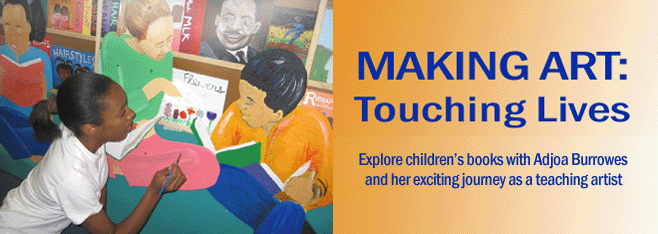10 Tips for Getting Your Story Published I often am approached by people after my art or writing workshop that have written a children’s book and are struggling to find next steps to get their story published. Many times I get e-mails requesting more information. Yesterday I visited an artist friend, who in a phone call, insisted I come by and see the story and art she created for her book. She confessed that she had never done this before and really needed some direction. When I arrived at her studio she excitedly read the story to me and showed me reproductions she made of the art, then pulled large sheets of paper from a portfolio to share the original illustrations created with expressive watercolor and bright pastel. The large playful artwork was laid on the floor in sequence so that I could see how they fit with the story. We walked from colorful illustration to illustration critiquing the art and evaluating how it fit with the words. I was impressed by the quality of the work and her determination to get to the next level and wanted to encourage her as best I could. I suggested a few possibilities that afternoon and left her studio feeling that I should provide more resources for her in this highly competitive market. Below are some basic tips I came up with and will share them with her and hope others will find this helpful as well.
1. Research the market
Check out trade magazines like Publishers Weekly for trends in the children’s book market. Get a copy of the 2008 Children’s Writer’s & Illustrator’s Market by Writers Digest, containing over 700 listings for book publishers, magazines, agents, art reps and much more.
2. Join an organization for writers
Check out the Society of Children’s Book Writers and Illustrators (SCBWI), a great resource for new as well as seasoned writers. They have many informative publications for members and have regional and national groups, events and conferences.
(www.scbwi.org)
3. Use community resources
Talk to teachers and librarians about your book idea. They may have good insight on what has been done before and whether some topics go ignored.
4. Know the rules of the game
Do your research. Every publisher has specific rules for submission. Most guidelines are accessible on the internet. Some publishers, for example, discourage multiple submissions and only accept work from agents.
5. What about artwork
Publishers discourage submitting artwork along with your story unless you are an artist. If you are, never submit originals. Get color copies of your artwork and create a mock up of the book matching the words with the art on the pages (this is called a dummy).
6. Cover the basics
Be sure your manuscript has been thoroughly proofed for grammatical or typographical errors before submission. Make sure you copyright your work. For copyright information www.copyright.gov/faq.html

7. Check for kid appeal
Read your stories to young people to get their reactions and comments. Revise if necessary.
8. Get organized
Keep track of where you submitted your story on index cards. If the manuscript is returned with a rejection, record the date and immediately send it to the next publisher on your list so you won’t lose momentum.
9. Search publishers for new talent awards
Lee and Low Books in New York for example have an annual New Voices Award for previously unpublished writers of color. You can go to their website for details www.leeandlow.com
10. Be patient
The submission process can be very long. Editors may get hundreds of submissions a year. It is not unusual to wait 2-3 months before getting a response. Personalized, hand written responses are rare.
Posted in January, 2008
 NEXT STOP MIAMI
NEXT STOP MIAMI
















